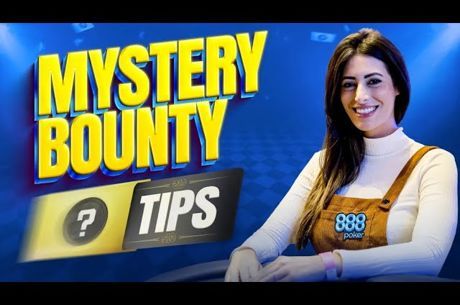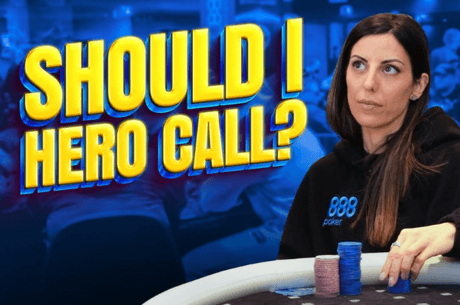Poker Strategy: In the Mix -- Why Position Matters in 2-7 Triple Draw

Last week I described a few of my experiences playing in an eight-game mix tournament on PokerStars. To refresh your recollection, eight games are played in rotation in an eight-game mix tournament: 2-7 triple draw, limit hold'em, limit Omaha hi/lo, razz, seven-card stud, seven-card stud hi/lo, no-limit hold'em, and pot-limit Omaha. Each game is rotated in order after six minutes; betting limits increase every other game, essentially making the levels twelve minutes long.
The hand upon which I made my exit from the tournament was played during Level 33, and it demonstrated the importance of position in draw games. I had just suffered a particularly disastrous round of pot-limit Omaha. It left me with a paltry 6,625 chips heading into 1,000-2,000 2-7 triple draw. Because of the presence of this particular game, all eight-game mix tables are played six-handed. At the time, because of table balancing requirements, we were playing five-handed. That meant that the blinds of 500 and 1,000 would come around very quickly. I didn't have much time to find a hand with which I could gamble. At the very worst, I could afford to pay the blinds one time without playing a hand. After that I was going to have to open up my starting hand requirements fairly wide if I hoped to remain in the tournament.
I found a hand I liked just before the blinds hit me the first time, in the under-the-gun position: 9♠9♥5♣4♥2♥ looked like a winner. I opened to 2,000 and was called by the player on my left and the big blind. Unfortunately I would have to draw before knowing how everyone else was drawing, and this would prove my undoing. In 2-7 triple draw, you have only two pieces of information to assist in making decisions: the betting actions of your opponents, and the number of cards that they draw. Knowing that an opponent intends to draw three cards, for example, could completely change the way you play your own hand. You know your opponent is very weak; you may draw only one card, either on a total bluff or assuming that even an average holding like a ten-seven will beat most hands that your opponent will draw into.
With this knowledge in mind, I watched as the big blind drew two cards. I opted to draw one to look like I had a nice four-card hand, hoping that I would be able to shake one player after the first draw. The player on my left also drew two. So far, so good.
I dumped the 9♥ and picked up the J♠. A mild improvement, but definitely a jack-nine is not a strong enough hand to take against two opponents. Still, when the action was checked to me, I bet 1,000 to see if either of my opponents had also improved to a four-card hand. When they both called, I figured myself for trouble. Yet the big blind drew two cards again, almost definitely a mistake since he was out of position and likely drawing against two four-card hands! I drew one, discarding the J♠ and catching the 3♦. My third opponent also drew one as I suspected he would, given his call of my bet after the first draw was completed.
This was my dilemma. I had a smooth nine, 9♠ 5♣ 4♥ 3♦ 2♥. Against one opponent, that's a hand to go to war with, especially as a short stack. Against two opponents, I was stuck pretty good, unsure whether to stand pat with my hand or to draw one more time, trying to improve to and eight or a seven. The risk, of course, was that my hand would become much worse after the draw, leaving me in a hopeless position.
I bet one more time, trying to shake the big blind. Unfortunately both players called. The big blind drew one on the third draw, leaving me to try to guess the intentions of the player behind me. If that player had acted before I did, I would have been in a much better position to win the hand. If he stood pat, I would have suspected that I needed to break my hand; the presence of the third player in the hand means he probably can't stand pat on a bluff. If he had drawn one, then I probably would have stood pat with my nine-five and hoped for the best.
As it was, I had to act before my final opponent acted. I elected to stand pat; he stood pat also, a sure sign I was done for. To make matters worse, the big blind led out on the river. I had only 1,600 chips left at that point, with the 1,000 big blind approaching the next hand. I put my chips in the middle, only to see the third player raise. I was toast; when all of the dust settled, my 9-5 lost to an 8-6 and a 7-6.
As you can see, the way I play this entire hand changes if I am in position for all of the draws. For one thing, it may be that the big blind lays down his hand after the first draw, since he no longer closes the action with his call. For another thing, I almost certainly break my hand and draw on the third draw when my other opponent stands pat with his hand. As it turns out, it may not have made a difference — I found myself up against an 8-6 and a "Number Two", 7-6-4-3-2, the second best possible hand in 2-7 triple draw. But that's results-oriented thinking. As poker players, we should always be striving to make correct decisions with the available information and without regard to what the outcomes of those decisions are. In triple draw, the easiest way to do so is to avoid playing out of position.








